INFORMATION AVAILABLE IN ENGLISH, GUJARATI AND HINDI
There are a number of conditions that can affect the foreskin (the piece of skin covering the top of the penis). They can affect boys of all ages and are usually easily treated.
The foreskin is the piece of skin that covers the top of the penis.
Conditions that can affect the foreskin include:
• Tight foreskin (Phimosis) – where the foreskin cannot be pulled back to reveal the head of the penis. All boys are born with phimosis. The foreskin retracts spontaneously by the age of 1 ½ to 2 years. A tight foreskin in puberty or adulthood can increase the risk of infection and cause problems with urination.
• Paraphimosis – A condition where the foreskin has retracted but gets trapped, restricting blood flow to the head of the penis. The penis will turn dark purple. Paraphimosis requires immediate medical attention as this condition can cause permanent damage to the penis if not treated early.
• Balanitis – an inflammation of the tip of the penis and foreskin usually caused by chemical irritation, bacterial or fungal infection. The head of the penis will become red, swollen and sore and there may be a thick and lumpy discharge.
What causes foreskin problems?
Foreskin problems can be the result of:
• Poor personal hygiene (not cleaning the head of the penis correctly)
• Infection
• Forcible attempts to retract the foreskin
What are the signs and symptoms of foreskin problems?
The appearance of the foreskin is usually enough to see whether there is a problem.
How are foreskin problems diagnosed?
In the case of paraphimosis (where blood flow is restricted and the penis turns purple), you should visit the hospital immediately as this condition can cause permanent damage to the penis.
How are foreskin problems usually treated?
In the case of infection, a child may be given a course of antibiotics or a steroid cream to reduce inflammation and irritation. The course of treatment may last between two and four weeks, depending on the severity of the strain of infection.
Some children may require a surgical procedure, such as:
• Circumcision – where the foreskin is removed altogether.
• Preputialplasty – where the opening of the penis is widened by an incision without removing the foreskin. The foreskin at the end of the operation would look just like a normal skin.
All of these procedures are carried out under anesthetic
Can foreskin problems be prevented?
Good hygiene is key to preventing problems that can be caused by infection.
In babies and children, the best way to clean the penis is by using water and baby soap. Don’t worry that you are not able to pull back the foreskin at this age – it’s very important not to try to retract a child’s foreskin forcibly, because this may cause damage to the delicate tissues of the penis. It could lead to bleeding, inflammation and the formation of scar tissue.
Once the foreskin begins to retract, the glans will naturally become more visible and easier to clean. It is important to be gentle – the less scrubbing the better. When boys reach adolescence, they should be encouraged to retract and clean their foreskin regularly.
What happens next?
Once treated, a child should not experience any further discomfort and there should be no further impact on his health.
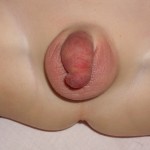
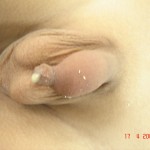
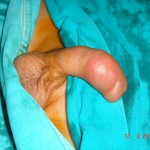 Acute Balanoposthitis
Acute Balanoposthitis

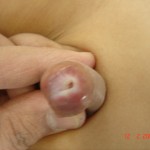 Scarred prepuce
Scarred prepuce
 Photograph after circumcison
Photograph after circumcison
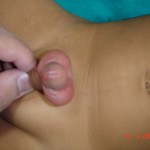 Paraphimosis
Paraphimosis
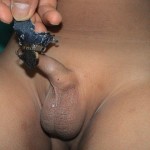 Zip Injury over prepuce
Zip Injury over prepuce
GUJARATI
ફાઇમોસીસ
ફાઇમોસીસ એટલે ઇન્દ્રિની ચામડી ઇન્દ્રિ ઊપર ચડી નહીં શકવાની ખોડ. બાળક જ્યારે જન્મે છે ત્યારે ઇન્દ્રિ તેની ખુદની ચામડીથી ઢંકાયેલી હોય છે. સામાન્ય સંજાગોમાં આ ચામડી ઇન્દ્રિ ઉપર ચડી શકતી નથી. કુદરતે આ વ્યવસ્થા એટલા માટે કરેલી છે કે જેથી બાળકના પેશાબની અંદર રહેલ એમોનિયાથી ઇન્દ્રિના મુખ અને પેશાબની નળીને નુકસાન ન થાય. સામાન્ય રીતે ઇન્દ્રિની ચામડી ઇન્દ્રિ ઉપર દોઢ થી બે વર્ષની અંદર આપોઆપ ચડતી થઈ જાય છે. પરંતુ દોઢ વર્ષની ઉંમર પછી પણ જા ચામડી ઇન્દ્રિ ઉપર ન ચડતી હોય તો આ બીમારીને ફાઇમોસીસ કહેવામાં આવે છે. ફાઇમોસીસની બીમારી માટે સુન્નત એટલે કે પેશાબની ચામડીનો આગળનો ભાગ કાઢી નાખવાની સર્જરી કરવામાં આવે છે. આ આૅપરેશન મુસલમાન, યહુદી અને બીજા ધર્મોમાં ધાર્મિક માન્યતાઓથી કરવામાં આવે છે. ચામડી સંપૂર્ણપણે ન કાઢવી હોય તો ‘Prepuceplasty’ નામની પણ એક સર્જરી કરી શકાય જેથી ચામડી ઇન્દ્રિ ઉપર આસાનીથી ચડી શકે અને ઇન્દ્રિનો દેખાવ નોર્મલ ઇન્દ્રિ જેવોજ રહેતો હોય છે. ફાઇમોસીસના કારણે ઘણીવાર ઇન્દ્રિના મૂખ ઉપર અને ઇન્દ્રિની ચામડીની અંદર ઇન્ફેક્શન પણ થાય છે. જેને ‘બેલેનોપોસ્થાઈટીસ’ કહેવામાં આવે છે. •
HINDI
फाइमोसीस
फाइमोसीस अर्थात इंद्रीय की त्वचा का इंद्रीय पर न चढ़ सकना। बच्चा जब जन्म लेता है तब उसकी इंद्रीय त्वचा से ढकी होती है। कुदरत ने यह व्यवस्था इसलिए रखी गई है ताकि बच्चे के मूत्र में उपस्थित अमोनीया के कारण इंद्रीय का मुख और मूत्र नलिका को हानि न होने पाए। सामान्यतया इंद्रीय की त्वचा इंद्रीय के उपर डेढ़ से दो वर्ष के भीतर अपने आप चढ़ती जाती है। लेकिन यदि डेढ़ वर्ष की आयु के बाद भी यदि त्वचा इंद्रीय के ऊपर नहीं चढ़ती है तो इसे फाइमोसीस कहते है। फाइमोसीस की बीमारी के लिए सुन्नत अर्थात इंद्रीय की चमड़ी के आगे के भाग को सर्जरी के द्वारा काट दिया जाता है। मुस्लिम, यहुदी और अन्य कुछ धर्मों में यह ऑपरेशन धार्मिक मान्यताओं के आधार पर किया जाता है। कई बार यदि चमड़ी पूरी तरह से न हटानी हो तो ‘प्रेप्युझ्प्लास्टी’ नामक सर्जरी की जा सकती है, जिससे की चमडी इंद्रीय के उपर आसानी से चढ़ सके और इंद्रीय का आकार सामान्य रहे। फाइमोसीस के कारण कई बार इंद्रीय के मुख पर और इंद्रीय की चमडी के भीतर संक्रमण हो जाता है। इसे ‘बेलेनोपोस्थाइटीस’ कहा जाता है। •




